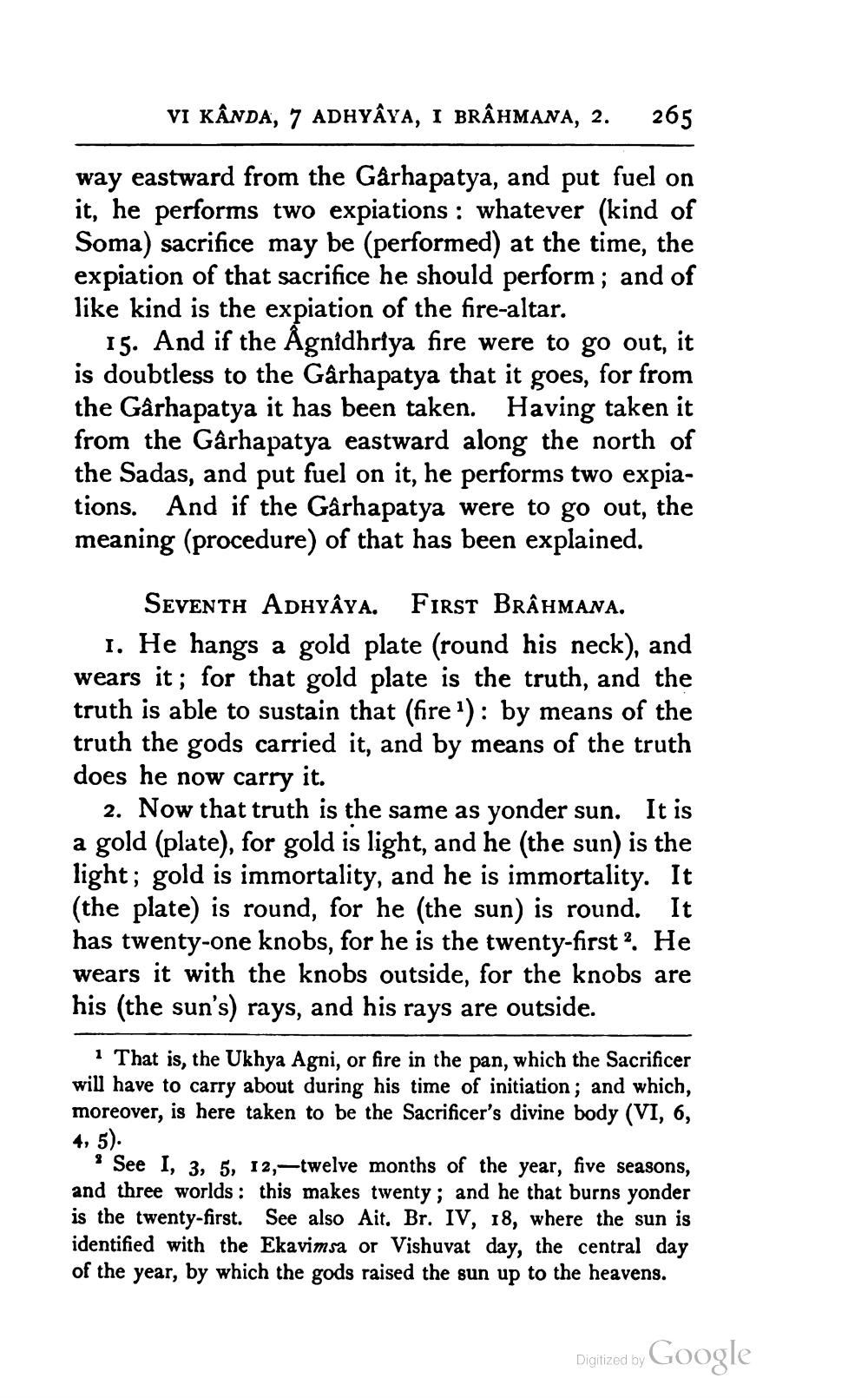________________
VI KÂNDA, 7 ADHYÂYA, I BRÂHMANA, 2.
265
way eastward from the Gårhapatya, and put fuel on it, he performs two expiations : whatever (kind of Soma) sacrifice may be (performed) at the time, the expiation of that sacrifice he should perform ; and of like kind is the expiation of the fire-altar.
15. And if the Agnidhriya fire were to go out, it is doubtless to the Garhapatya that it goes, for from the Gårhapatya it has been taken. Having taken it from the Gårhapatya eastward along the north of the Sadas, and put fuel on it, he performs two expiations. And if the Gârhapatya were to go out, the meaning (procedure) of that has been explained.
SEVENTH ADHYÂYA. First BRÂHMANA. 1. He hangs a gold plate (round his neck), and wears it; for that gold plate is the truth, and the truth is able to sustain that (fire 1): by means of the truth the gods carried it, and by means of the truth does he now carry it.
2. Now that truth is the same as yonder sun. It is a gold (plate), for gold is light, and he (the sun) is the light; gold is immortality, and he is immortality. It (the plate) is round, for he (the sun) is round. It has twenty-one knobs, for he is the twenty-first?. He wears it with the knobs outside, for the knobs are his (the sun's) rays, and his rays are outside.
1 That is, the Ukhya Agni, or fire in the pan, which the Sacrificer will have to carry about during his time of initiation; and which, moreover, is here taken to be the Sacrificer's divine body (VI, 6, 4, 5).
* See I, 3, 5, 12,—twelve months of the year, five seasons, and three worlds: this makes twenty; and he that burns yonder is the twenty-first. See also Ait. Br. IV, 18, where the sun is identified with the Ekavimsa or Vishuvat day, the central day of the year, by which the gods raised the sun up to the heavens.
Digitized by Google




